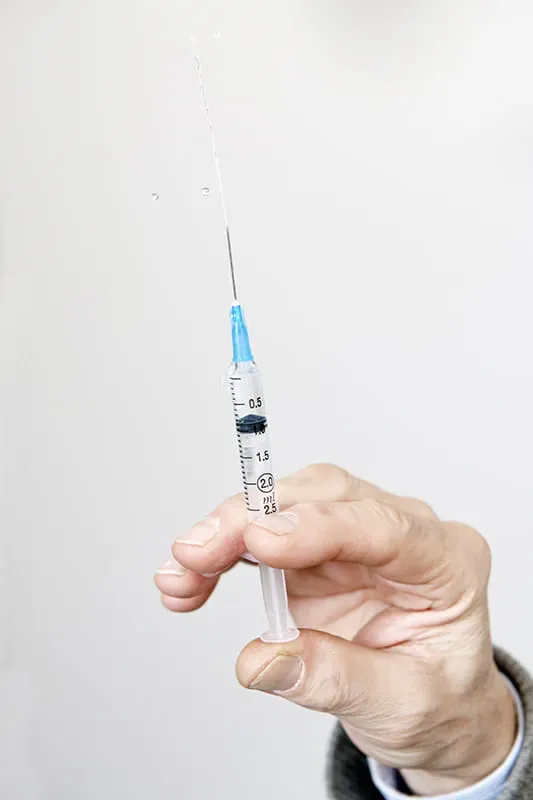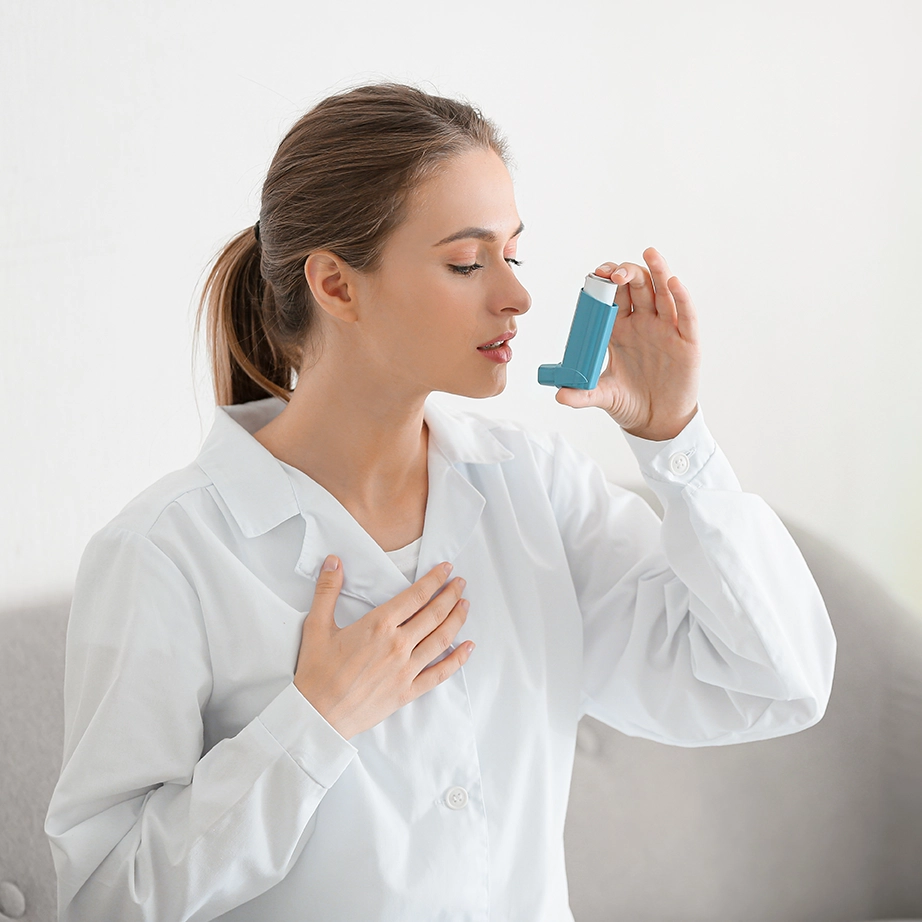ERS 2025: Chronic Obstructive Pulmonary Disease: Highlights
Assessing Physical Frailty in COPD: Agreement and Stability of Four ERS/ATS-Recommended Screening Tests – A Prospective Cohort Study
Presenter: Henrik Hansen (Denmark)
Physical frailty frequently occurs in individuals with COPD, and recent ERS/ATS guidelines advocate the use of the Short Physical Performance Battery (SPPB), Timed-up and Go (TUG), 30-second sit-to-stand (STS), and Handgrip Strength (HGS) as recommended screening methods; however, limited evidence exists regarding the agreement between these assessment tools. This study evaluated the agreement, predictive accuracy, and 12‑month stability in 102 COPD patients (61 females, mean age 70±9 years, FEV1 34±11%, activity 2018 [IQR 815; 3629] steps/day, CAT 19±7, SPPB 8 [IQR 5‑10]). Using SPPB <10 as gold standard, baseline kappa agreement was moderate for TUG (κ=0.53), fair for 30STS (κ=0.38) and HGS (κ=0.26), with similar results at 12 months. PPV/NPV were 0.85/0.71 (TUG), 0.76/0.73 (30STS), 0.77/0.49 (HGS), remaining stable over 12 months. ERS/ATS-recommended screening tools for frailty in COPD were found to be fair to moderate and showed consistency over 12 months.
One Step Closer: Which Elements of Pulmonary Rehabilitation (PR) Improve Physical Activity in COPD? Component Network Meta-Analysis
Presenter: James Manifield (United Kingdom)
A meta-analysis analysed 44 studies with a physical activity (PA) outcome, of which 30 studies measuring steps/day were included (n=2,876) to assess which pulmonary rehabilitation (PR) components most effectively increase PA (steps/day) in COPD. Lower limb aerobic exercise showed the strongest evidence for increasing steps (209 [95%CrI 50-377] steps/day). Strength training also increased steps (172 [95%CrI 30-314]). Behavioural interventions, education, and nutrition showed trends toward improvement for PA.
The study concluded that in exercise-based interventions for COPD, lower limb aerobic exercise had the strongest (modest) effect on increasing daily steps, with moderate certainty and with less certainty for strength training and PA tracking, respectively.
Real-World Evidence (RWE) Study on Clinical Outcomes in Asthma: Fluticasone Furoate/Vilanterol (FF/VI) versus (vs) Budesonide/Formoterol (BUD/FOR)
Presenter: Ashley Woodcock (United Kingdom)
The current evidence comparing inhaled corticosteroid and long-acting β2-agonist (ICS/LABA) treatments—specifically fluticasone furoate/vilanterol (FF/VI) versus beclometasone dipropionate/formoterol (BDP/FOR)—in treatment-naïve asthma patients in real-world settings is limited. The aim of the study was to compare real-world evidence of fluticasone furoate/vilanterol (FF/VI) versus beclometasone dipropionate/formoterol (BDP/FOR) in patients with asthma in England. The study was a retrospective analysis of adults aged 18 years and older with asthma who newly started treatment with either fluticasone furoate/vilanterol (FF/VI) or beclometasone dipropionate/formoterol (BDP/FOR). The index date was defined as the first prescription date of either medication, with follow-up lasting less than 12 months. Eligible participants had at least one prescription for a short-acting β2-agonist in the six months before the index date and continuous general practitioner registration for at least 12 months before the index. Patients diagnosed with COPD were excluded from the study. Exacerbation rates were numerically similar for FF/VI vs BDP/FOR in patients who just initiated treatment, lower for FF/VI when outcome was measured until an event occurred, and significantly lower for FF/VI among patients who continued uninterrupted treatment for 1 year (FF/VI: n=384, BDP/FOR: n=3342). After 1 year of uninterrupted therapy, FF/VI was associated with fewer asthma exacerbations than BDP/FOR.
COPD Physiology May Impact Spirometry Acceptability
Presenter: James Dean (United Kingdom)
The 2019 ATS/ERS spirometry guidelines specify that to confirm the test starts from total lung capacity (TLC), the difference between forced inspiratory vital capacity (FIVC) and forced vital capacity (FVC) should be less than 100 ml or 5% of FVC.
In this study with 38 COPD patients, TLC was measured from inhalation starting at functional residual capacity (TLCFRC) and residual volume (TLCRV), simulating the beginning and end of the spirometry manoeuvre, respectively. Patients were grouped by ∆TLC (TLCRV - TLCFRC) into ≤100 ml difference (48%) and >100 ml difference (52%). Patients with ≤100 ml difference had significantly worse small airway resistance during inhalation (R5in - R20in: 0.14 vs 0.09 kPa·s/L, p=0.04), higher specific resistance (SReff) reflecting increased work of breathing (mean difference = 72.0 [21.8–82.9] kPa·s, p=0.04), and more exacerbations in the past 12 months (p=0.002). The St. George’s Respiratory Questionnaire symptom score showed a negative correlation with ∆TLC (r = -0.34, p=0.04). Other lung volumes (FRC, RV), oscillometry parameters (X5, AX), and spirometry values (FEV1, FVC, FEV1/FVC, FEF25-75) were similar across groups.
Patients with ΔTLC >100ml may have non-acceptable spirometry possibly due to lower work of breathing inhaling from RV than FRC, with small airway disease potentially masking this effect in some patients.
Expanded High Risk COPD Exacerbation Inclusion Criteria in a COPD Trial
Presenter: João Ferreira (Portugal)
Many COPD clinical trials require a history of moderate or severe exacerbations within the past 12 months as a primary inclusion criterion. However, this requirement may reduce the generalizability of findings by excluding a large portion of the COPD patient population and potentially hindering recruitment efforts. The CRESCENDO trial, a phase 2a study, randomized 381 moderate to severe COPD patients using an expanded “high-risk of exacerbation” inclusion criterion: either <1 moderate or severe exacerbation in the last 24 months, frequent productive cough, or post-BD FEV1 < 50%. This broadened criterion added 123 more subjects (32%) compared to the standard criterion of ≥1 exacerbation in the last 12 months. Among those randomized, 216/311 (69%) with ≥1 exacerbation in the last 24 months had a COPDCompEx event, compared to 34/70 (49%) without exacerbations in the last 24 months.
For the last 12 months, 187/258 (72%) with exacerbations had events versus 63/123 (51%) without. This expanded inclusion improved recruitment and increased COPDCompEx events, enhancing result generalizability and recommending adoption for other COPD trials to accelerate timelines.
Prevalence of Poor Appetite in People with COPD and Relationship with Clinical Outcomes
Presenter: Timothy O Jenkins (United Kingdom)
Appetite is infrequently assessed in COPD but may play a role in nutritional depletion. The Simplified Nutritional Appetite Questionnaire (SNAQ) evaluates appetite, satiety, taste, and number of meals per day. A SNAQ score of 14 or less indicates poor appetite and is linked to a higher risk of weight loss in older adults, while a SNAQ score of 15 or more indicates good appetite. However, limited data are available regarding the use of SNAQ in outpatient COPD populations.
This study aims to determine the prevalence of poor appetite in stable COPD patients and examine its association with clinical outcomes. In a study of 1422 stable COPD outpatients, 54.6% had poor appetite (SNAQ ≤14). Patients with poor appetite showed significantly lower fat free mass (FFM: 22.8±4.6 vs 23.8±4.5 kg, difference 0.9 [CI 1.4–0.5]), muscle strength (bilateral knee extension one repetition max (KE-1RM): 34.5±26.2 vs 38.2±27.4 kg, difference 3.7 [CI 6.7–0.6]), physical performance (Short Physical Performance Battery (SPPB): 9.6±2.6 vs 10.2±2.2, difference 0.6 [CI 1.1–0.2]), and health status (Chronic Respiratory Questionnaire total (CRQ): 70.2±19.9 vs 84.5±19.9, difference 14.3 [CI 16.4–12.2]), along with higher breathlessness scores (Medical Research Council dyspnoea scale (MRC): 3.4±1.0 vs 3.0±1.0, difference -0.4 [CI -0.3 to -0.5]).
These findings highlight that poor appetite is common, and linked to lower muscle mass, strength, physical functioning, and greater symptom burden.
BCMA are Elevated and Correlate with Smoke Exposure in Patients with Chronic Obstructive Pulmonary Disease
Presenter: Lijuan Gao (China)
Elevated B lymphocyte levels have been detected in the airways of patients with COPD, but the underlying molecular mechanisms remain not fully understood. This study aimed to investigate serum B cell maturation antigen (BCMA) as a potential prognostic biomarker for COPD.
Serum BCMA and C-reactive protein (CRP) levels were measured in 127 COPD patients and 71 non-COPD controls using a Human Magnetic Luminex Screening Assay. Results showed that serum BCMA levels were significantly higher in COPD patients compared to controls (P = 0.0042) and were further elevated in patients experiencing acute exacerbations of COPD (AECOPD) compared to those with stable disease (P = 0.0008). Serum BCMA levels negatively correlated with forced expiratory volume in 1 second percent predicted (FEV1%pred) (rho = -0.283, P = 0.0001) and forced expiratory flow at 25–75% of forced vital capacity (MMEF75%-25%) (rho = -0.29, P = 0.0002). Furthermore, receiver operating characteristic (ROC) curve analysis indicated a strong ability of BCMA to distinguish COPD patients with an area under the curve (AUC) of 0.78 (95% CI, 0.687–0.866).
Overall, these findings suggest that serum BCMA is a promising new prognostic and predictive biomarker for COPD patients, potentially reflecting B cell–associated disease processes and aiding in patient stratification and management.
Association Between Chronotypes and Comorbidities in Obstructive Sleep Apnea: Age Effect
Presenter: Vassilis Vlahakos (Greece)
In a study of 671 OSA patients (60.2% men, median age 56), morning chronotype was found associated with higher prevalence of hypertension, dyslipidemia, diabetes, and cardiovascular disease compared to evening chronotype (all p<0.05). Conversely, depression was more common in evening chronotype. Binary logistic regression adjusting for confounders showed that the relationship between morning chronotype and cardio-metabolic comorbidities was significantly stronger in individuals younger than 60 years. This indicates that in OSA, morning chronotype, especially in those under 60, is linked to a higher cardio-metabolic comorbidity burden.
Role of Remotely Measured REM Sleep in the Determination of Clinical Recovery from COPD Exacerbations Using Wearable Technology
Presenter: Seyedfakhreddin Nabavi (Canada)
Chronic obstructive pulmonary disease (COPD) is marked by breathlessness and acute exacerbations and is a leading cause of hospitalization in adults. These exacerbations involve worsening respiratory symptoms and widespread pathophysiological changes affecting multiple systems.
This study aimed to evaluate the clinical usefulness of remotely collected REM sleep time, a distinct phase of sleep, as a potential marker for recovery following COPD exacerbations. Data was analysed from a completed longitudinal prospective study involving 21 patients with moderate to very severe COPD undergoing a current exacerbation. REM sleep was monitored using a biometric ring worn continuously for 21 days at home. Recovery from exacerbation was determined through the validated Exacerbation of Chronic Pulmonary Disease Tool (EXACT) Patient-Reported Outcome (PRO). By Day 21, the recovered group (n=10) exhibited a 37% higher amount of REM sleep compared to the persistent worsening group (n=11) (17.4 minutes difference [95% CI: 10.2, 24.7], P < 0.001). Females showed the greatest improvement in REM sleep, averaging an increase of 32 ± 8 minutes.
REM sleep duration closely correlates with clinical status during COPD exacerbations. Remote monitoring of REM sleep could offer a straightforward, non-invasive approach to daily tracking of patient recovery during exacerbation phases.
Ref: European Respiratory Society Congress 2025, September 27 - October 1, Amsterdam, Netherlands




